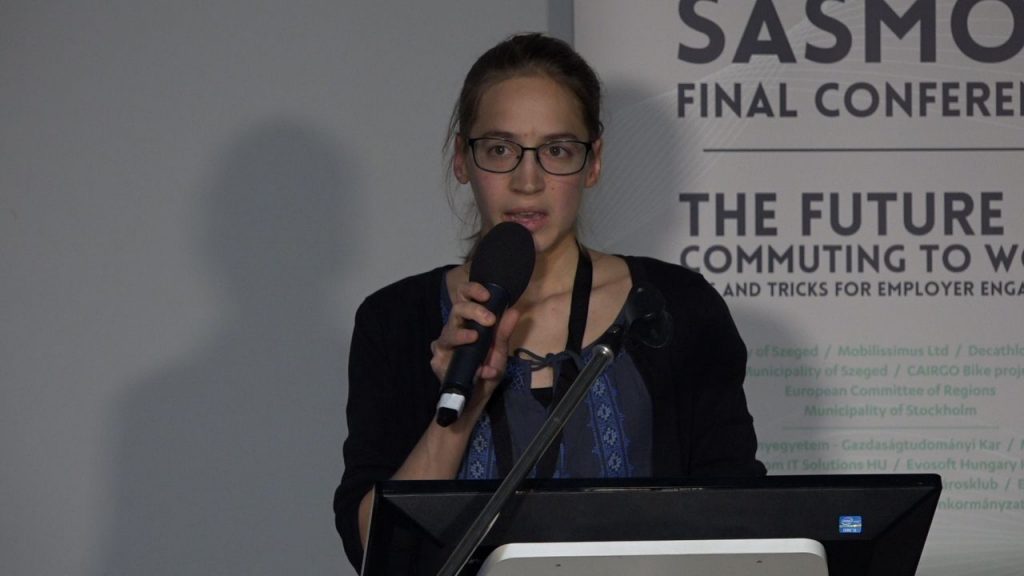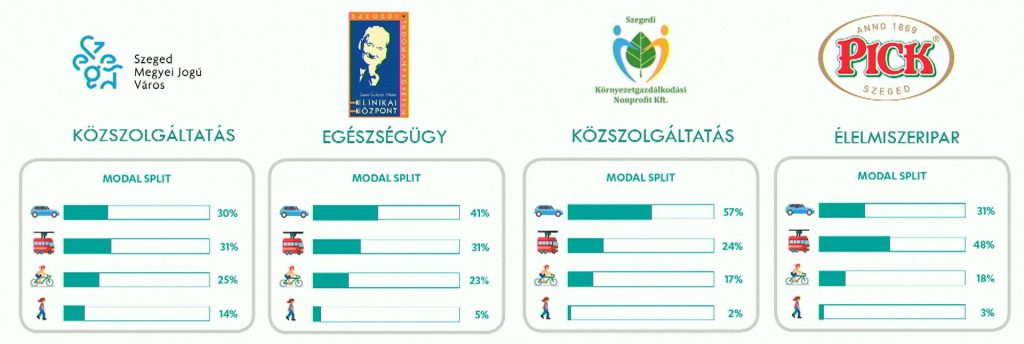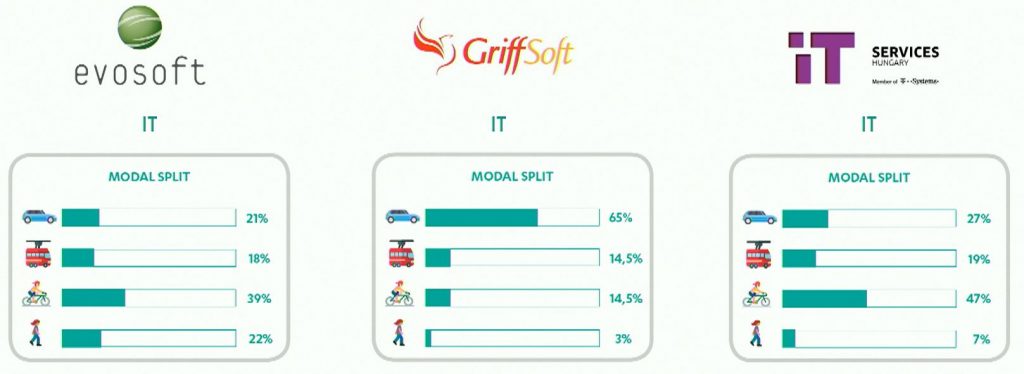Well-developed bike infrastructure, satisfied employees: is this the recipe for success for mobility?
How can the mobility of a company’s employees be planned well? Why is it necessary? What can one gain with it? In the SASMob project, seven different but all well-operating schemes of seven companies of different sizes can serve as examples to other employers.
- Appointing a mobility manager, establishing mobility management.
- Site survey and questionnaire on employees’ mobility habits.
- Preparing a mobility plan.
- Implementation – with infrastructure interventions and soft measures.
- Repeating the employee plan and updating the mobility plan.
The above are the five points which were the same in the mobility plans of the companies that cooperate in the SASMob project – the Municipal Government of the City of Szeged, Environmental Management Company of Szeged, Szent-Györgyi Albert Clinical Centre of Szeged University, Pick Szeged Zrt., Deutsche Telekom IT Solutions, Evosoft and Griffsoft. At the closing conference of the SASMob project held in the Information Centre of Szent-Györgyi Albert Agora, Noémi Szabó, city planning engineer at Mobilissimus Kft., said that the mobility manager, who coordinated the entire mobility plan and its implementation, played a key role at all these companies. Among other things, the mobility manager was responsible to identify
- how, by what vehicles employees go to work,
- how many parking spaces are available at or near the company premises,
- how many bike shelters the company has,
- in what condition these are and what is their rate of utilisation.

Preparing the above-mentioned questionnaire and getting it completed was also an important task. There was a company that did not used to care about this topic at all, which had never given a thought to what progress could be made with minimum investment.

Besides minor infrastructure interventions, awareness raising campaigns and trainings were held based on the survey results.

But what tangible things happened?
- At Deutsche Telekom IT Solutions, bike shelters were built, moreover, the company also has a service station, and even built bike paths and sidewalks that reach these shelters. Deutsche Telekom IT Solutions has five company bikes that can be rented, and even realised that it is useful to have a shower and changing room where people can get refreshed and change clothes after arriving by bicycle.
- The Municipal Government placed bike stands in the interior yards of its buildings. It also invested in bathrooms and bikes for rent. In addition, the Municipal Government organised “bikers’ breakfasts” and encouraged its employees to use the applications developed in the SASMob project.
- Compared to its size, Evosoft has a huge company bike fleet, and its employees can also use electric scooters. It actively participates in the Bike to Work! campaigns, and did not hesitate to enlarge the bike shelter capacity and install a service station.
- The Environmental Management Company not only enlarged its bike shelters and bought bikes for rent but even granted extra holidays to those who regularly go to work by bicycle.
- At Pick, the bike infrastructure was improved, the sidewalks were renewed and made safer, the parking spaces were repainted and rationalised. Besides, together with Szeged Transportation Company, a ticket and season ticket vending machine was installed so employees can locally buy what they need.
- At Griffsoft, employees can get their bicycles overhauled free of charge once a year. In the framework of the SASMob project, the company developed several applications related to sustainable transport, of which its employees have become active users.
- The Clinical Centre, being the largest employer, aimed to support sustainable commuting in all possible ways at its twenty-seven sites. The measures taken introduced the development of the bike infrastructure and parking spaces, the installation of a ticket and season ticket vending machine and the installation of a charging station for electric cars. Besides, following discussions with Szeged Transportation Company, even the timetable was modified to make it possible for even more employees of the Clinical Centre to use community transport.
Source: Szeged.hu